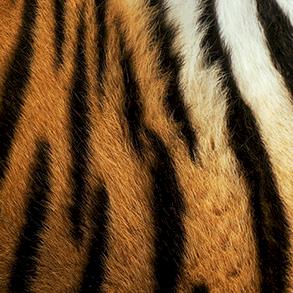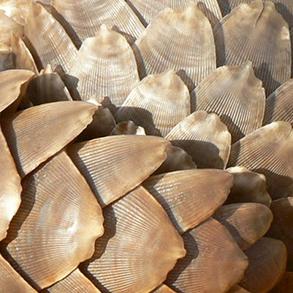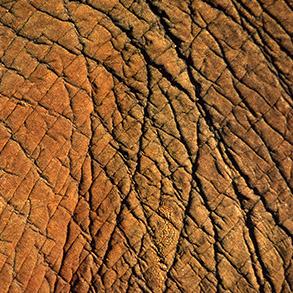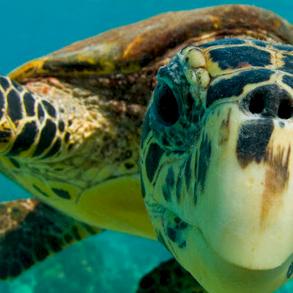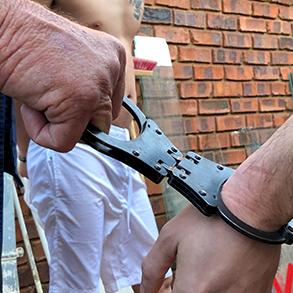
Seized poached elephant tusks and poacher's weapons, Oyem, Gabon © WWF / James Morgan
i
the span of our work against wildlife crime
Wildlife crime has been a conservation scourge for decades. Poaching and illegal harvesting, particularly in Africa, continues to devastate wildlife populations, threatening the survival of rhinos, elephants, pangolins, rosewoods and a wide variety of other species.
The illegal wildlife trade, now the fourth largest illicit transnational activity in the world, is the fuel that drives the wildlife crime fires. Continuing consumer demand, largely from Asia, for increasingly rare horns, ivory, bones, skins, and precious timber is driving unprecedented wildlife population declines.
according to the UN, in 2016 the annual value of illegal wildlife trade is estimated to be worth
USD7–23 billion
what can be done to turn the tide?
The conservation community has never been so well equipped to combat the motivations, rewards and enablers of wildlife crime.
Yet, advances in technology and rising globalisation mean that wildlife traffickers and highly organised transnational criminal syndicates are increasingly able to capitalise on regulatory loopholes and weak enforcement.
Our work on combating wildlife crime and illegal trade take a trade chain-wide approach—from working with WWF on anti-poaching efforts in source countries to developing consumer interventions in destination markets. Behavioural science and social marketing are helping to guide initiatives to reduce consumer demand for illicit or threatened wildlife; political advocacy and influence is helping us work with governments to bring about changes in national and international laws; partnerships with the private sector are helping to stamp out illegal wildlife trade online and throughout transport routes; and innovative technology is helping us support enforcement agencies on the ground, in the lab and at court.
Amur leopard Panthera pardus orientalis © naturepl.com / Lynn M. Stone / WWF
i
more about key species affected by wildlife crime
a selection of our projects fighting wildlife crime
Global coalition to end wildlife trafficking online
The growing threats from illegal online activity requires a response to match.
TRAFFIC with our partners WWF, and the International Fund for Animal Welfare (IFAW) have brought together a partnership between leading tech companies from across the world to spearhead an industry-wide commitment to reduce wildlife trafficking online by 80% by 2020.
Wildlife TRAPS
In 2020, the Wildlife TRAPS Project - a long-running partnership funded by USAID and implemented by TRAFFIC in collaboration with IUCN – shifted direction while continuing to pursue innovation and non-traditional partnerships to reduce illegal, unsustainable, and unsafe wildlife trade.
In this new phase, Wildlife TRAPS is building on strong collaborations already developed with key actors in the transport, finance, wildlife forensics, and behavioural change sectors to inform a more singular focus on reducing potential zoonotic disease risks associated with trade in wild animals.
Dried abalone stored in a glass jar in Hong Kong © Wilson Lau / TRAFFIC
i
Targeting Natural Resources Corruption
Corruption throughout supply chains for wildlife, forests and fisheries is a major obstacle to global transitions towards legal and sustainable trade and harvesting.
The Targeting Natural Resource Corruption (TNRC) project brings together expertise in both conservation and anti-corruption from a consortium led by World Wildlife Fund (WWF) with the U4 Anti-Corruption Resource Centre at the Chr. Michelsen Institute, TRAFFIC, and the Terrorism, Transnational Crime and Corruption Center (TraCCC) at George Mason University.
ReTTA
Reducing Trade Threats to Africa's wild species and ecosystems (ReTTA), works to identify trends in illegal or unsustainable trade and help develop national and international solutions that could turn the tide for wildlife.
The project covers both legal and illegal trade, assisting enforcement agencies and governments with the latest wildlife trade trends and modus operandi of international criminal syndicates operating in African countries.
Wildlife Crime in Namibia and Kavango Zambezi
The Combating Wildlife Crime in Namibia and Kavango Zambezi Area Project (CWCP) seeks to counter growing threats from transnational wildlife crime.
The project is specifically working to protect globally important populations of rhino and elephant found in northwest Namibia and project sites in the Kavango Zambezi Transfrontier Conservation Area (KAZA).
Wildlife sniffer dogs
Wildlife detector dogs are proving invaluable in the fight against wildlife crime, and are used in a variety of ways, from anti-poaching units helping rangers in National Parks in Africa, to tracking wildlife contraband in airports.
For example, detecting hidden ivory among millions of sea containers is like finding a needle in a haystack. We have successfully tested the use of vacuum pump technology that collects vapour traces from containers, sample of which are then taken to trained dogs to determine if contraband is present.
Wildlife Crime Initiative
The Wildlife Crime Initiative (WCI) was a joint TRAFFIC and WWF programme dedicated to tackling the most impactful, large-scale and organised forms of wildlife crime.
It addressed the three main drivers of wildlife crime: consumption of illegal or endangered wildlife products, poor or ineffective legal or policy frameworks, and illegal financial flows. The WCI evolved to match dynamic wildlie crime trends, and has since been mainstreamed across the environmental and security sector at large.

